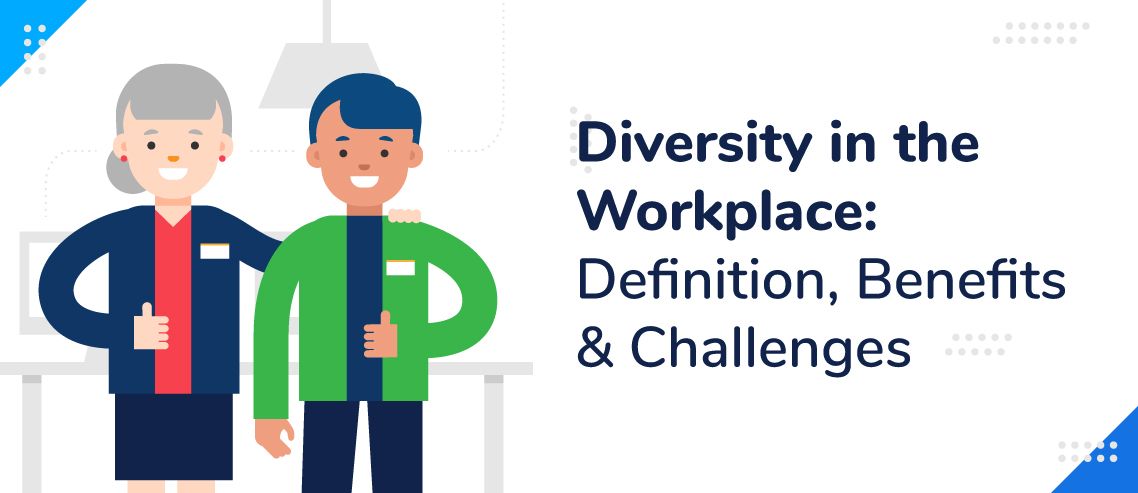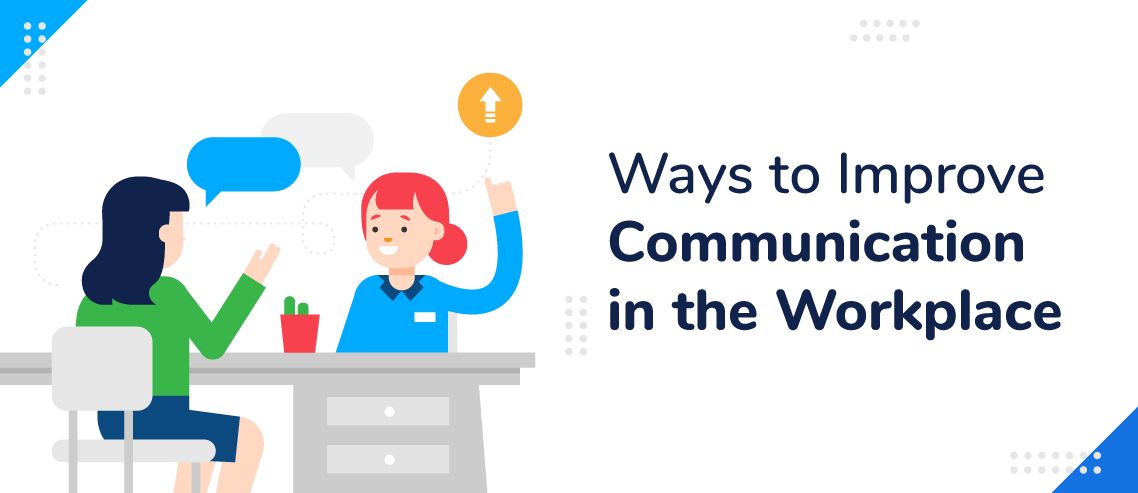Diversity in the Workplace: Definition, Benefits & Challenges

Diversity in the workplace has been an important issue for business leaders over the past decade.
First and foremost, there are the ethical considerations: every person deserves to be judged on merit, no matter their age, race, gender, socioeconomic status, religion, sexual orientation, or appearance.
And then there’s the bottom line.
Many studies have clearly shown a strong link between high levels of workplace diversity and profitability. This strongly suggests that organizations that fail to embrace diversity are likely to struggle and fall behind as they’re simply not reflective of the markets they serve.
Diversity in the Workplace: Definition
Put simply, diversity in the workplace means that an organization hires a vast range of diverse individuals.
There are many different categories of diversity to be aware of. These include:
-
- Age
- Race
- Gender
- Socioeconomic status
- Religion
- Sexual orientation
- Appearance
A good rule of thumb is to hire people based solely on their suitability for the role – due to education, experience, and attitude.
This is something every company should have been doing for years, but workplace diversity stats suggest otherwise. Yet, if you fail to hire in a diverse way, you could be generating significantly less revenue than if you had a diverse workforce.
Workplace Diversity: Benefits
Truly achieving workplace diversity comes with myriad benefits for your employees and your business. Bear in mind, however, that you can’t reap the benefits while only paying lip service to diversity.
A belief that every person deserves equal opportunities, regardless of their various characteristics, needs to be at the core of your leadership and your business in order for you to truly achieve workplace diversity.
Boost Creativity
Exposing employees to a multitude of world views and a wider range of perspectives is bound to increase creativity – it’s hard to be creative when you only have a narrow range of reference points to lean on.
Indeed, a swathe of studies have confirmed the link between creativity and diversity.
This is a huge advantage for business leaders: an IBM survey of more than 1,000 CEOs found that creativity is considered the single most important quality in a modern business leader.
Improve Your Hires
When you’re hiring with a diverse mindset, you have access to a much larger talent pool, allowing you to hire the person who is truly best for that job. But the link between diversity and hiring runs much deeper than this; across the board, people want to work within diverse companies.
Research from ZipRecruiter found that 86% of job seekers consider workplace diversity an important factor when considering what jobs to apply for. So by failing to hire in a diverse manner, you could be putting off a huge number of talented job seekers.
Enhance Your Brand
Let’s be clear here – working towards true workplace diversity should never be about improving how people perceive your brand. Your diversity efforts need to come from the heart.
However, demonstrating that your brand is socially conscious – reflecting the popular values of wider society in the 2020s – will encourage people to spend money with it.
Indeed, a survey conducted by Accenture found that 70% of Millennial respondents would rather buy from a brand that demonstrates inclusion and diversity. This means that if your brand is shown to be lacking in ethics, it could suffer a significant backlash as consumers and clients vote with their wallets.
Increase Revenue
Similarly, increasing revenue should never be the goal when it comes to workplace diversity, but studies show that building a diverse workforce is more profitable than not doing so.
Research from McKinsey and Co found that companies in the top quarter for gender diversity are 21% more likely to enjoy above-average profitability than companies in the bottom quartile.
Meanwhile, companies in the bottom quartile for diversity surrounding gender and ethnicity were 29% more likely to underperform in terms of profitability.
Workplace diversity: Challenges
Making big changes in the workplace is never simple. As you improve the diversity of your organization, you need to be prepared to overcome a number of challenges.
Remember, it will be worth it to operate a company that truly stands by its authentic principles, and boost creativity, recruitment, brand, and profitability at the same time.
Here are some of the challenges that may arise:
Finding Diverse Candidates
In some lines of work, there is not necessarily a stream of qualified candidates from all backgrounds. For instance, work within the STEM sector is male-dominated, as women are not traditionally pushed towards educational subjects such as science and maths.
This means you might need to do a little extra legwork in order to give diverse candidates the same opportunities as people of genders or races that have traditionally dominated your industry.
Examples include creating internships designed to help people from diverse backgrounds, or establishing mentoring programs or internal support networks for people who identify as female.
Overcoming Prejudices
For diversity to truly benefit your company, and to ensure that every employee is happy working in your offices, it’s essential to create an inclusive environment.
In an ideal world, all of your employees will already be free of prejudices – however, this is often not the case. Even where outward prejudices are not present, internal prejudices remain.
To combat this, your diversity policy should include a section on a disciplinary procedure for people who exhibit offensive behaviour surrounding racism, sexism, homophobia, ageism, or transphobia, for instance.
Furthermore, this zero tolerance policy should be embedded into the fabric of your business. There should be no exceptions and no excuses – your employees need to know you’re fully behind them.
Cultural Differences
When you’re running a diverse workplace, cultural differences will likely arise. Sometimes these can cause friction simply because employees are ignorant of the cultural traditions of their colleagues.
In other cases, prejudices could emerge, causing complaints and making some colleagues feel unwelcome in the workplace.
Some examples could include:
- People who don’t drink alcohol for religious reasons in a workplace where most social events involve alcohol
- People who need breaks to pray several times a day in an office where most people do not
- Differences in work attitudes among people of different generations. For instance, an older employee might prefer to be more formal at work, so a younger person with a more laid back attitude could irritate them
These specific issues could be resolved by:
- Diversifying work events so not all of them revolve around alcohol, and ensure non-alcoholic drinks of the individual’s choosing are available where the event is at a bar or restaurant.
- Set aside an appropriate space for multi-faith prayer in or close to the office. Provide education for colleagues to answer any questions.
- Ask managers to set their own rules – in line with employer guidelines – in terms of how relaxed or formal the workplace should be. In some workplaces, for example, being half an hour late is okay if the employee makes up the time later, while in others it would be cause for a meeting with a manager.
The best way to remove such obstacles to workplace harmony is to provide diversity and inclusion training to educate employees and help them to understand and be tolerant of any cultural differences that may arise.
This will help employees to accept and respect the differences of their colleagues – an absolutely vital component of a diverse workplace.
How are you planning to improve your workplace diversity? Share your approach with us in the comments.
JD enjoys teaching people how to use ZoomShift to save time spent on scheduling. He’s curious, likes learning new things everyday and playing the guitar (although it’s a work in progress).




